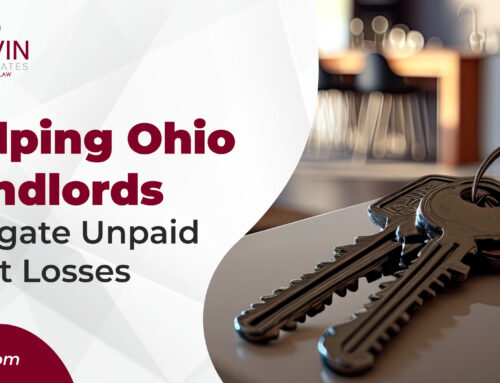Ohio Appeals Court Renders Ruling in Favor of Landlords in “Dog-Harboring” Case
In Morris v. Cordell, the First Appellate District Court of Appeals of Ohio, based in Cincinnati, recently rendered an interesting opinion regarding the potential liability of a landlord of a single-family house for injuries sustained from a dog’s activity.
In Morris, the Plaintiff alleged he was walking on a street with his grandchildren and a leashed dog when another dog darted out of a single-family house and began to wrestle with Plaintiff’s dog, ultimately resulting in the Plaintiff falling and injuring his knee. The Plaintiff sued the resident of the house, Cordell, as well as the owners, the Langs, who were Cordell’s aunt and uncle.
Cordell admitted she owned the dog which ran from the single-family house. Mr. and Mrs. Lang purchased the house for Cordell to live in, and had an oral agreement with Cordell to pay rent plus utilities. Cordell paid rent for a while, but stopped before this incident. However, she continued to pay the utilities and took care of the property, including paying for grass-cutting and HVAC tune-ups. The Langs paid the real estate taxes and paid for major repairs. Residing nearby, the Langs visited the house often, but entered only with Cordell’s permission.
In his lawsuit, Morris alleged Cordell and the Langs were owners or harborers of the dog in question. The Langs filed a motion for summary judgment, seeking to terminate the case against them prior to trial, contending they were not owners, keepers or harborers of the dog per Ohio revised Code 955.28. The trial court granted the summary judgment motion, resulting in this appeal.
Revised Coder 955.28 states in relevant part, “[t]he owner, keeper, or harborer of a dog is liable in damages for any injury, death, or loss to person or property that is caused by the dog…” and imposes strict liability. In this case, there was no evidence the Langs owned the dog, and since they were not in the vicinity when the incident occurred, they were not considered “keepers” of the dog. That left Plaintiff with the task of proving the Langs were “harborers” of the dog. To determine this, the Court focused on the control of the premises where the dog lived. “A person who is in control of the premises where a dog lives and silently acquiesces in the dog being kept there by the owner can be held liable as a harborer of the dog.”
Citing several Ohio cases, the Court observed, “[g]enerally, a landlord will not be held responsible for injury caused by a tenant’s dog so long as the tenant is in exclusive possession and control of the premises. Absent a contrary agreement, a lease agreement transfers both the possession and control of the premises to the tenant. The hallmark of control is the ability to admit or exclude others from the property.” Furthermore, the Court observed the presumption that if the leased premises consists of a single-family house, it is presumed that exclusive possession and control of the entire property belongs to the tenant.
The evidence in this case showed Cordell had possession and control of the premises; the Langs did not have keys to the property and only assisted with or entered the house with Cordell’s permission and knowledge. The Plaintiff attempted to argue this was not a “true” landlord-tenant situation due to, among other things, the familial situation, the failure to pay rent, and the absence of a written lease. He contended the Langs’ assistance in tending to the property and Cordell’s children and the dog demonstrated control and possession of the property. However, the Appeals Court found that a lease can exists even in the absence of a writing and a failure to pay rent, and even where the owner pays real estate taxes, insures the property and makes major repairs.
Plaintiff cited the case of Godsey v. Franz out of the Sixth District of Ohio, wherein that Court found the owner of a house and farm was liable as a “harborer” of his son’s dog, even though the owner lived in a house on adjacent land. In Godsey, the son lived on a 100-acre farm owned by his father, occupying a house without a written lease and without paying rent. However, the son maintained the house and its immediate surroundings. The father testified he felt free to go to and from the house where his son lived because he owned it, and that his son’s eight dogs were free to run back and forth between the adjacent farms. The Godsey Court found the father to fall within the definition of “harborer” of the dog because he allowed the dogs to be in the common or shared areas of the farms.
The Morris Court distinguished Godsey because this was a single-family house and did not involve any common areas. “Generally, a common area is an area over which multiple people have possession and control.” Ultimately, Morris could not overcome the presumption Cordell, the tenant, had exclusive control and possession of the premises. The Court observed, “[A] landlord cannot be a harborer of a dog that is kept on the premises the tenant has sole control over,” and upheld the lower Court’s ruling granting summary judgment to the Langs.
The fact that the premises in question was under the exclusive control and possession of the tenant, and that there were no common areas and thus, no question of control in any way by the landlord, was key in this case which construed Ohio law on the subject.




